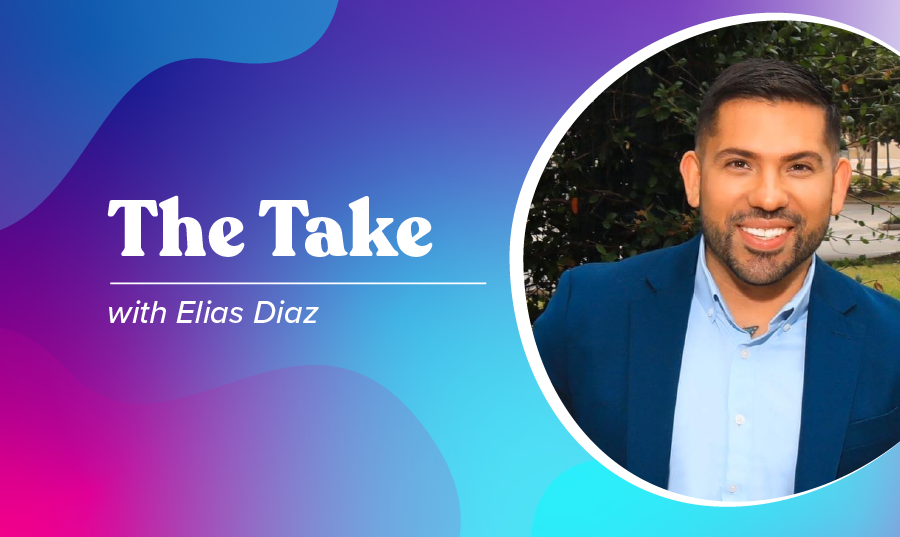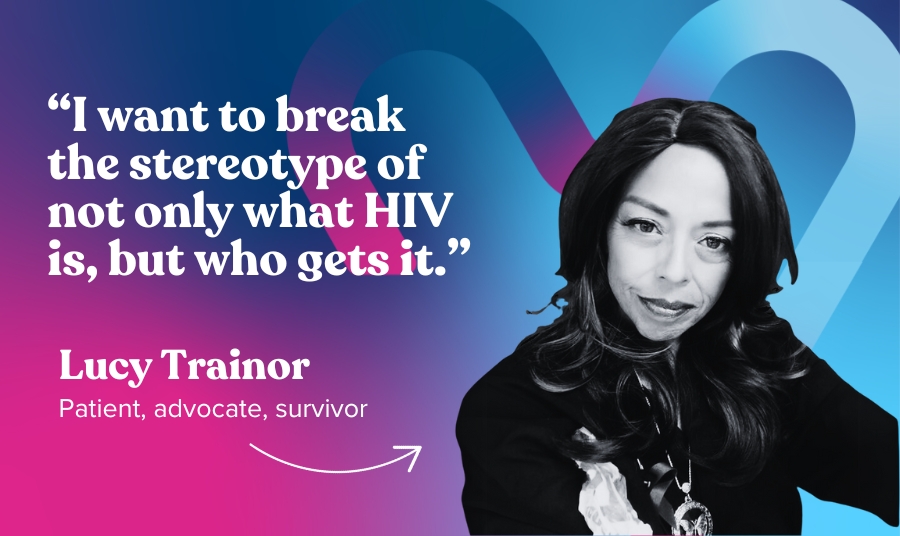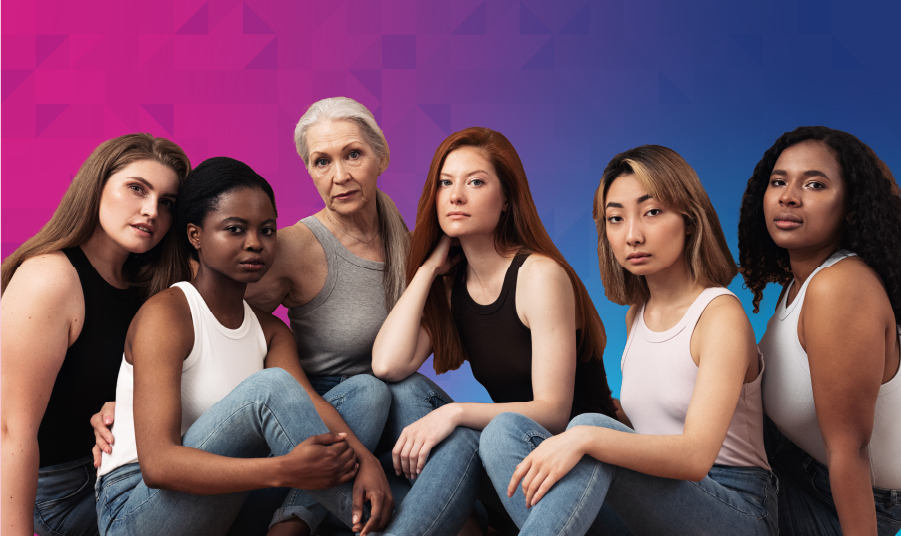As a child, Elias Diaz says an existential fear of HIV overcame his upbringing and sexual development. In this month’s edition of “The Take,” the mental health clinician and compliance officer with Maverick County Hospital District, cofounder of Eagle Pass, Texas’ first LGBTQIA non-profit organization, and cover subject of POZ magazine talks about why HIV and health inequity is impacting the nation’s behavioral health, what covered entities can do to address the issue, and how he’s dedicated to innovating a service care model that treats “people like people.”
The connection between HIV and mental health issues
Glen: Elias, studies show that people living with HIV have higher rates of behavioral health issues, including mood, anxiety, and cognitive disorders. What are some of the societal issues and social determinants of health that contribute to this? How does substance abuse impact the mental health of those living with HIV?
Elias: When we look at the landscape of HIV—where it started and how it’s affected specific communities throughout the years—there is still so much disparity. It’s very easy for us to connect the dots between HIV and mental health. From personal experience, ever since I became sexually active at the age of 16, I’ve lived in constant fear that I’m going to acquire HIV, and so much of my psychosocial and sexual development has centered around that. What does focusing on fear do to our health practices? We sometimes over-normalize substance use. We sometimes sexualize substance use. All to make the experience a little bit more tolerable for us.
Within the LGBTQ+ community, there’s still a lot of work to do to address all these factors. We’ve just seen a recent wave of attacks against our safety. And this is not something that’s isolated to just Colorado. We’ve seen anti-LGBTQ+ sentiment increase after we had made some good headway in the other direction.
In terms of communities of color, I just came back from a recent meeting with heterosexual men and women from the Black community who are living with HIV. I spoke with trans folks in the southern states. The commonality between these groups spanned outside of the realm of HIV. These communities are being impacted in a very disproportionate way, whether it’s through targeted violence, systems of oppression, or inequitable health care. All those factors affect who gets access to services, including quality HIV prevention and treatment. When it comes to being a person living with HIV, that puts you at a much higher risk for either acquiring a substance use disorder or a mental health disorder.
When we look at the landscape of HIV–where it started and how it's affected specific communities throughout the years–there is still so much disparity. It's very easy for us to connect the dots between HIV and mental health.
Elias Diaz, Mental Health Clinician and compliance officer, Maverick County Hospital District
Treating the whole patient is key to behavioral health care
Glen: More and more community health centers and other types of covered entities are including sexual wellness as part of their overall missions. How does offering behavioral health services play into considering patients’ health holistically? You all do a great job at Maverick County Hospital District.
Elias: It’s about meeting people where they are. People are people, and we need to recognize that when building the service care delivery model. We need to understand even from the funding level that the community is made up of people, not numbers. When you look at a service package like Ryan White, which I’m very thankful for and provides life-sustaining services, it’s still so rigid in the way that the rules say we can offer services. Because the individual living with HIV might be married. They might have a child. This creates a service gap. And then you have other funding buckets like for HIV prevention. We silo these spaces and say these things do not go together when in fact, they do.
These same communities are at-risk populations when it comes to sexual wellness. There are all these comorbidities, such as STDs, that come from not being able to look at the patient’s whole health. This is a continuum whether your clients are HIV positive or negative, because chances are they are coming to the same clinic and may be accessing or needing the same services. To think that behavioral health is something separate from sexual wellness is not the right way to go.
We need to understand even from the funding level that the community is made up of people, not numbers.
Elias Diaz, Mental Health Clinician and compliance officer, Maverick County Hospital District
Creating a “medical home” that fosters a care continuum
Glen: Tell me a bit more about the behavioral health program you’ve built at Maverick.
Elias: Through various partnerships, like ours with Avita, we’ve built a service model that creates a medical home for a client. When an individual comes there, they’re able to get their labs. They’re able to get behavioral health. They’re able to get primary and specialty care. We want each of our patients to know that no matter what they’re dealing with, we can offer them services that tie into both their physical health and their emotional and social well-being.
We just had a Pride event where we were able to bring the community together with our LGBTQ+ population and celebrate life, wellness, and everything our town has to offer. I want people to know that Eagle Pass is a safe place for them to live. That goes beyond any intervention or treatment modality we offer in a clinic setting. Going out into the community and creating safe spaces for people has a much more lasting impact.
I want people to know that Eagle Pass is a safe place for them to live. That goes beyond any intervention or treatment modality we offer in a clinic setting.
Elias Diaz, Mental Health Clinician and compliance officer, Maverick County Hospital District
Harm reduction model: Meeting patients where they are
Glen: Can you give me an example of a patient living with HIV who struggled with behavioral health issues and how receiving mental health services positively impacted their physical wellness by increasing their treatment adherence?
Elias: I worked with a client struggling with substance use and having difficulty completing school. He’s a very bright and talented individual. But he was socializing his drug use and sexual activity. In rural areas like Eagle Pass, it’s common to try to create connections through sexual activity, substance use, or both. So, it’s important to offer clients what they need without shaming their process.
We look at patients’ behaviors and see red flags of risk. But once we can understand where they’re coming from and what they need from the community, we can link them to better care. Adopting a harm reduction model has been essential for us. For example, not everybody’s ready to be 100% sober. As a result of adopting this model, our outcomes have grown exponentially. In this case, the individual could complete school and get a job. At this point, he’s living life on his terms. He’s reporting positive outcomes as he continues his wellness journey.
We look at patients' behaviors and see red flags of risk. But once we can understand where they're coming from and what they need from the community, we can link them to better care.
Elias Diaz, Mental Health Clinician and compliance officer, Maverick County Hospital District
Tips for covered entities considering behavioral health
Glen: What pointers do you have for covered entities that do not currently have behavioral health services but are looking to initiate programs?
Elias: With maybe the exception of New York and California, states nationwide are experiencing a shortage of mental health professionals. Often community members get stuck on, “Oh, there’s not enough funding for this,” or “There are not enough resources.” We create those internal barriers for ourselves and limit our service delivery model.
After I moved to Eagle Pass from California, the Board of California was going through a transition process. So, it took me about 11 months to receive my reciprocal license. Once I got my license, I thought it would be easy to find a job in behavioral health services. There was a need in the community. There was a shortage of health care professionals. And there was an identified agency doing this type of work but had never built its infrastructure that way. But even though I was available and the community needed me, there was no place for me to do my job. Instead, I started a behavioral health care program from scratch and was added to Maverick County Hospital District’s physician specialty group.
The demand for my services soon skyrocketed, and we quickly learned that there was more of a need for behavioral health services than capacity. At that point, I started looking at other structural barriers.
My advice to covered entities on the cusp of starting a program is to look at what services you currently have, consider what’s available to you, create partnerships, and find ways to work within your system or change your system. Healing can come via multiple resources; it doesn’t necessarily have to be delivered in the form of individual therapy by a licensed clinic. It could be via an event, educational campaign, or community project. When we take a step back and understand that what we’re doing is just trying to move forward, the possibilities become much broader.
Look at what services you currently have, consider what's available to you, create partnerships, and find ways to work within your system or change your system.
Elias Diaz, Mental Health Clinician and compliance officer, Maverick County Hospital District
Pitfalls to avoid when building a mental health program
Glen: What pitfalls do covered entities need to avoid when building behavioral health programs?
Elias: Sometimes, the regulations we must meet to receive funding cause structural barriers in the way we deliver services. And then there are the structural barriers we set up as an organization, which is a whole other layer.
We need to offer patients as many service options as we can. From my experience with recovery and mental health, I know that the road is not always a straight line. In my case, really good service delivery models saved my life. Whether it was access to free sexual wellness services, participating in a domestic violence survivors’ group, or individual therapy, there was a vast service package I could engage in. I still consider it whenever I’m thinking about the growth and development of my program.
We need to offer patients as many service options as we can. From my experience with recovery and mental health, I know that the road is not always a straight line.
Elias Diaz, Mental Health Clinician and compliance officer, Maverick County Hospital District
Addressing barriers and breaking up with fear
Glen: I was incredibly touched by your piece, “I’m Breaking Up with Fear.” Would you share with us how your personal experiences led to your HIV activism and focus on behavioral health?
Elias: Sure. As a child, even before I was in my sexual development stage, HIV shaped my life. By the time I was born in the 80s, things in the LGBTQ+ community were back to being hush-hush, to being afraid of our partners [because of HIV].
In my work, I’m very focused on generational trauma. I have my own generational trauma as a Hispanic male. Beyond that, there’s a generational trauma when it comes to the LGBTQ+ community. I never went through the early stages of the HIV epidemic, but I inherited some of that existential fear. It’s been passed down and metastasized in so many ways.
By the time I was in my 20s, cultural practices had changed, and so had the conversations we were having. But we were still afraid of each other. I always say that whether you’re a person living with HIV or not, if you’re a gay man who is dating or even in a relationship, you are always affected by it. If you don’t have it, you’re afraid that you’re going to get it.
I’m not a person living with HIV. A big part of my life has been about prevention. There have been times when I’ve been able to access PrEP. There have been times I haven’t for one reason or another. But at this point, I just want to be liberated from fear. I’m not afraid of contracting HIV at this point. But I’m still stifled by that fear. That affects my community and the way that we relate to each other.
That fear is constantly playing out, and it’s important for covered entities to analyze. But overall, we need to look at our barriers and opportunities. That’s the best way forward. No matter where we’re located in the country, we must continue to innovate and create something specific to our service delivery models to build something relevant to our communities and the populations we’re focused on.
To think that behavioral health is something separate from sexual wellness is not the right way to go.
Elias Diaz, Mental Health Clinician and compliance officer, Maverick County Hospital District
What’s your take? Whether you have an idea for a future guest or topic for our blog post series or would like to comment on the insights of one of our past guests, we’d love to hear from you! Reach out to us on social media on our LinkedIn, Twitter, and Facebook channels.
About Elias Diaz
Elias is a mental health clinician and compliance officer with Maverick County Hospital District. He co-founded Eagle Pass, Texas’ first LGBTQIA Non-Profit Organization, Eagle Pass SAFE (Sexual Advocacy for Everyone), which serves the rural communities of southwest Texas. He’s also a member of the Eagle Pass City Council, where he serves as the first LGBTQIA-elected official. As part of his work to increase awareness of preventive measures for HIV and STIs; decrease barriers to preventive care; and address negative attitudes about the LGBTQIA community, people living with HIV, and people who have mental illness, Elias is involved in the CDC’s Let’s Stop HIV Together program, Greater than AIDS Texas Spanish language campaign, and ViiV Healthcare’s Here As I Am listening initiative. He uses his unique story to bring attention to the topic of HIV prevention in Latinx communities, and wrote and produced PreParadas!, an anti-stigma campaign targeted at Latinx matriarchs that promotes HIV prevention and equips mothers with tools to support their LGBTQIA sons. Elias was recently named one of POZ magazine’s 100 Latinx advocates working to make a difference in the fight against HIV and was featured on the cover of the September 2022 issue.
About Glen Pietrandoni
Glen is chief advocacy officer at Avita, an award-winning pharmacy leader, passionate 340B program advocate, and internationally respected HIV and LGBTQ+ activist. He’s deeply engaged in Avita’s mission to advocate for health equity and the 340B Drug Pricing program and works to bring together stakeholders from the pharmaceutical industry and patient advocacy arenas. Through webinars, conferences, Avita’s thought leadership blog series “The Take,” and the organization’s engagement with multiple community and trade associations, Glen leads Avita’s educational and awareness efforts and acts as a voice for its covered entity partners and patients. He continually fights for continued access to the 340B program and advances stigma-free HIV, PrEP, LGBTQ+, and sexual wellness care for underserved patient populations. Glen recently received Pharmacy Times’ Lifetime Leadership honor at the Next-Generation Pharmacist awards. He serves on the Board of Pharmacy for the State of Illinois, was formerly chairman of the Board of Trustees of AIDS United, and sits on the board of Community Voices for 340B (CV340B). He has earned American Academy of HIV Medicine and Apexus 340B certifications.




